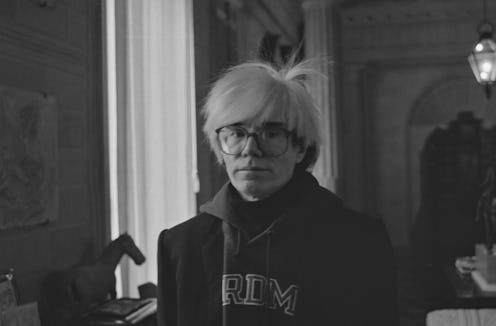Streaming
Yes, That’s The Late Andy Warhol Narrating His Own Netflix Docuseries
Well, kind of.

Andy Warhol died in 1987, but a new Netflix docuseries is bringing him back to life — sort of. Premiering on March 9, The Andy Warhol Diaries uses the notably private artist’s posthumously published diary, Popism: The Warhol ‘60s, to dive into his innermost thoughts.
The diaries were written and edited by Pat Hackett, who transcribed Warhol’s words from daily morning phone calls from 1976 until five days before his death. The calls originally began as a way to keep track of Warhol’s business expenses, but it soon turned into a “cathartic” diary for Warhol, according to a Christie’s interview with Hackett. Towards the end of his life, Hackett asked Warhol if he’d every thought about talking to a psychologist. His response? “I don’t need one. I have you.”
The Andy Warhol Diaries offers a rare glimpse at the elusive artist, who director Andrew Rossi described as “a construction on every level.” Warhol “reinvented himself when he took the A off of his last name, Warhola, and put on the white wig,” Rossi told Paper Magazine. “He was so meticulous about what he presented [to the world].”
The show also employs a construction of its own: The Andy Warhol Diaries is narrated by a voice that sounds exactly like Warhol, but it’s not technically him. With The Andy Warhol Foundation’s permission, Rossi and executive producer Ryan Murphy used an AI program to recreate Warhol’s voice. Using text-to-speech technology combined with recordings of actor Bill Irwin reading the diary entries, the series gives viewers a digital simulacrum of Warhol, which is used alongside actors recreating scenes from the diary.
While this technique is becoming increasingly common — most recently, an AI was used to recreate Mark Hamill’s voice for young Luke Skywalker in The Book of Boba Fett — many consider it controversial. Some people were uncomfortable when Morgan Neville’s documentary Roadrunner: A Film About Anthony Bourdain used a deepfake of Bourdain’s voice, while others, like NPR critic Jason Sheehan, argued, “Is it all that different than Ken Burns having Sam Waterston read Abraham Lincoln's letters in his Civil War documentary?” (Bourdain’s wife later tweeted that she never OK’ed the voice.) In response to the debate, Neville told The New Yorker, “We can have a documentary-ethics panel about it later.”
These conversations will likely continue with The Andy Warhol Diaries. But some reviewers feel that while strange, the AI reconstruction is fitting for an artist like Warhol. “It turns out, against all odds, that the novelty of [the AI voice] not only works but, in fact, becomes surprisingly moving as the series progresses,” Andy Battaglia wrote for Art News. “It may well be that employing ‘deepfake’ voice simulation is bad in every way in every other instance, but Warhol — a stoic cipher who tried to speak as little as he could and, when forced to, made a game of evasion — proves to be a special case.”
Daniel Fienberg at The Hollywood Reporter agreed: “The reality is that Warhol, ever a fan of robotics and mechanical reproduction, would have been amused by the technique.”